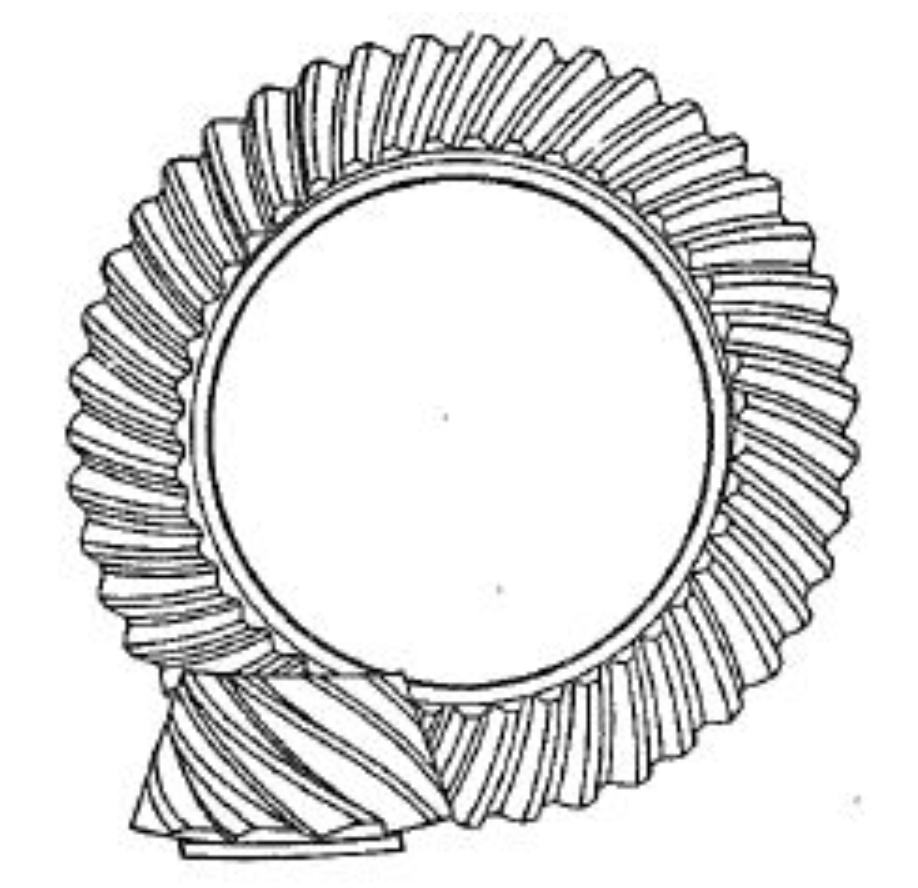Innovations in hypoid gear lubrication play a crucial role in extending the lifespan and enhancing the performance of these gears, especially in heavy-duty applications. Effective lubrication is key to reducing wear, friction, and heat, which are common challenges in hypoid gear operation. Let’s explore some of these innovations:

1. Advanced Lubricant Formulations
- Synthetic Lubricants: These lubricants offer superior performance compared to traditional mineral oils, especially in extreme temperatures. They maintain viscosity, reduce friction, and provide better protection against wear.
- Additives: Modern lubricants are formulated with additives such as extreme pressure (EP) agents, anti-wear agents, rust inhibitors, and antioxidants. These additives enhance the lubricant’s ability to withstand high stress and temperatures, prevent corrosion, and increase oxidation stability.
2. Environmentally Friendly Lubricants
- Biodegradable Lubricants: As environmental concerns rise, there is an increased focus on developing lubricants that are less harmful to the environment. These lubricants break down more quickly and have a lower environmental impact in case of leaks or spills.
3. Smart Lubrication Systems
- Automated Lubrication Systems: These systems deliver the right amount of lubricant at the right time to hypoid gear, ensuring consistent and optimal lubrication. They reduce the risk of over- or under-lubrication and can be monitored remotely for better maintenance planning.
- Condition Monitoring: Sensors integrated into lubrication systems can monitor the condition of the lubricant (like viscosity, contamination, and temperature), providing real-time data to predict maintenance needs and prevent failures.
4. Nanotechnology
- Nanoparticle Additives: The inclusion of nanoparticles in lubricants can significantly improve their properties. These particles can fill in microscopic imperfections on hypoid gear surfaces, reducing friction and wear.
5. High-Performance Greases
- Specialty Greases: For certain applications, especially where leakage might be an issue or in enclosed systems, high-performance greases are developed. These greases have a higher staying power and can withstand high loads and temperatures.
6. Temperature and Pressure-Resistant Lubricants
- Lubricants that maintain their properties under extreme pressure and temperature conditions are crucial for hypoid gear used in heavy machinery and automotive applications.
7. Customized Lubrication Solutions
- For specialized industrial applications, lubricants are being tailored to meet specific requirements, considering factors like gear material, operating environment, speed, load, and temperature.
Conclusion
Innovation in hypoid gear lubrication focuses not just on the lubricant’s chemical composition but also on the delivery and monitoring systems, aiming to enhance performance, extend lifespan, and reduce environmental impact. As technology advances, we can expect even more sophisticated solutions to emerge, further improving the efficiency and reliability of hypoid gear in various applications.
